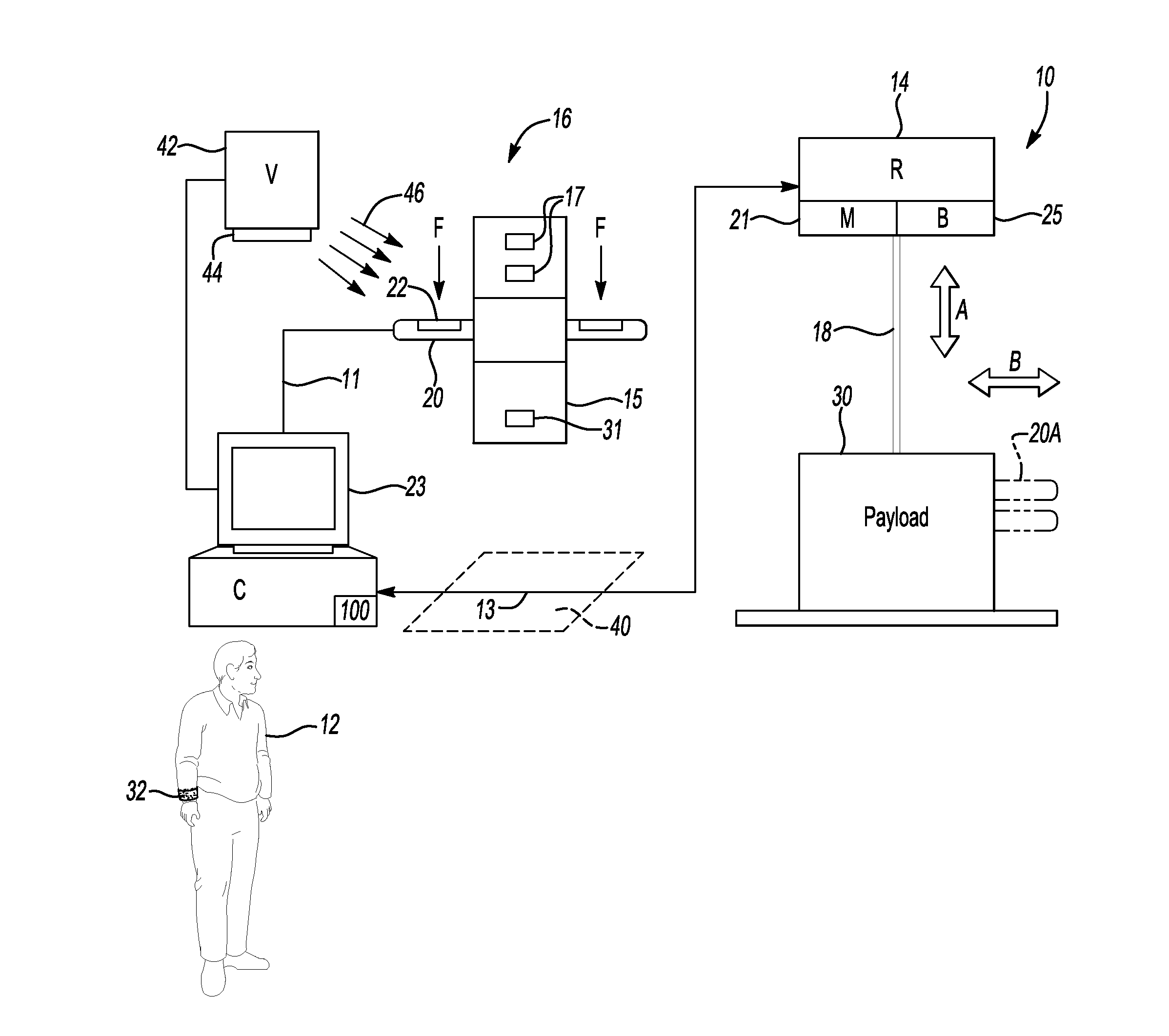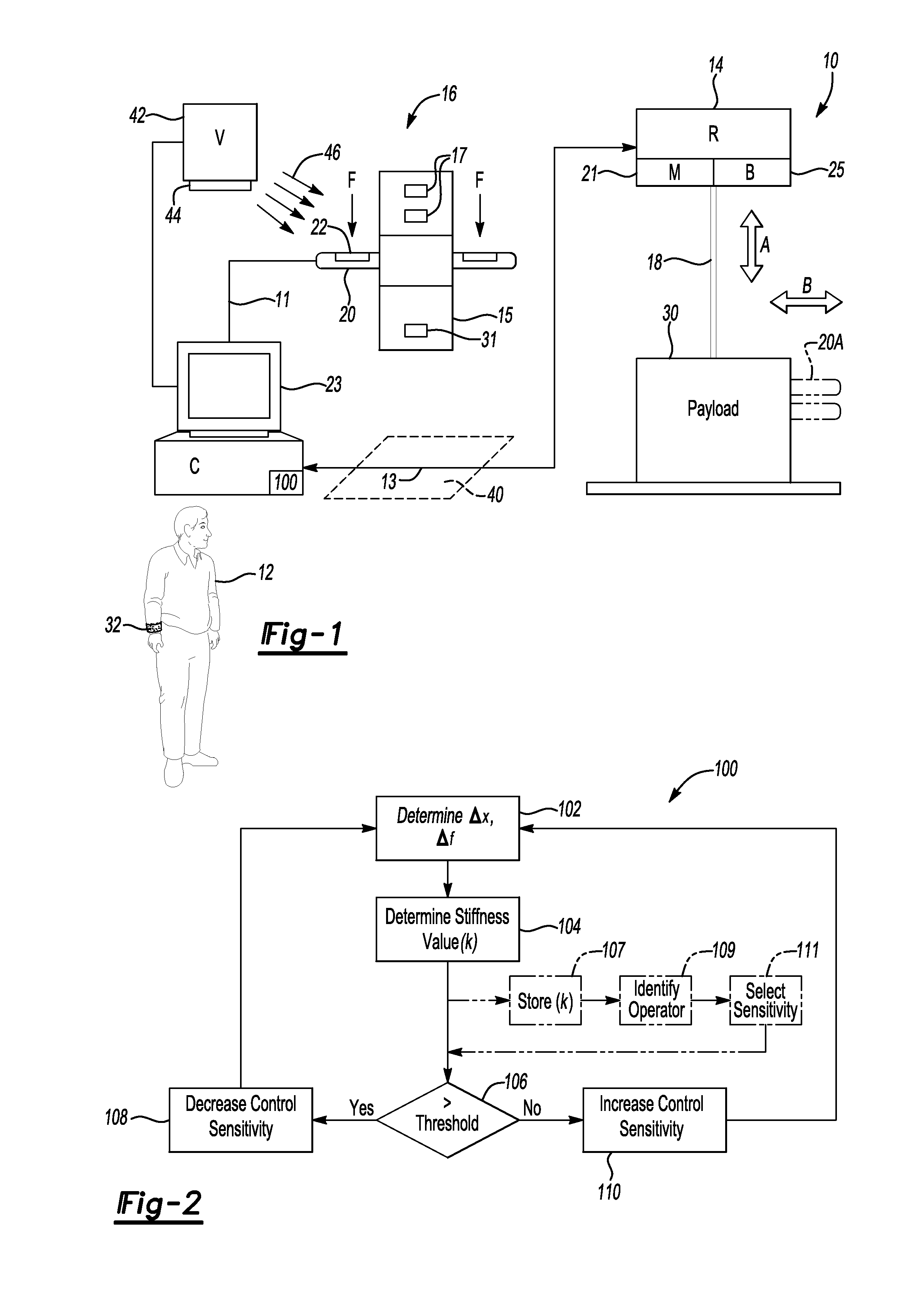Human-robot interactive system having a human stiffness estimation control algorithm
a robot and stiffness estimation technology, applied in the field of system and a method for controlling a robot in a human-robot interactive system, to achieve the effect of optimizing control stability and optimizing control stability
- Summary
- Abstract
- Description
- Claims
- Application Information
AI Technical Summary
Benefits of technology
Problems solved by technology
Method used
Image
Examples
Embodiment Construction
[0013]With reference to the drawings, wherein like reference numbers refer to the same or similar components throughout the several views, FIG. 1 shows a Human-Robot Interactive (HRI) system 10 adapted for performing a robot-assisted operation. Within the HRI system 10, a human operator 12 interacts with a robot (R) 14 by imparting an input (arrow F), e.g., a pushing force, to an operator-robot interface 16 having a frame 15 and handle bars 20 adapted to receive the input.
[0014]In one embodiment, the robot 14 may be configured as an overhead payload assist device adapted for assisting in the positioning of a payload 30 within a work area or cell, as indicated by arrows A and B. The robot 14 may include various powered elements and / or actuators, e.g., one or more motors (M) 21 and brakes (B) 25, as well as any required relays, gears, power supplies, power conditioning equipment, etc., needed for operating the robot. Payload 30, for example an automobile engine, transmission, or other...
PUM
 Login to View More
Login to View More Abstract
Description
Claims
Application Information
 Login to View More
Login to View More - R&D
- Intellectual Property
- Life Sciences
- Materials
- Tech Scout
- Unparalleled Data Quality
- Higher Quality Content
- 60% Fewer Hallucinations
Browse by: Latest US Patents, China's latest patents, Technical Efficacy Thesaurus, Application Domain, Technology Topic, Popular Technical Reports.
© 2025 PatSnap. All rights reserved.Legal|Privacy policy|Modern Slavery Act Transparency Statement|Sitemap|About US| Contact US: help@patsnap.com


